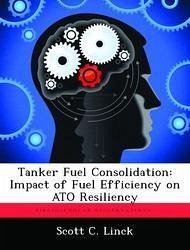Nicht lieferbar

Tanker Fuel Consolidation: Impact of Fuel Efficiency on ATO Resiliency
Versandkostenfrei!
Nicht lieferbar
The United States Air Force is committed to purchase the most capable and efficient tanker available to replace its aging KC-135 fleet. One capability demanded of hte new tanker is the ability to receive fuel from other tankers while airborne, a practice referred to as fuel consolidation. Under the operating constraint of reducd budgets and continuing pressure to reduce Air Mobility Command's overall fuel costs, it is likely that future planners will attempt to utlize fuel consolidation to minimize the number of tankers needed for a given Air Tasking Order (ATO). This study examines the impact...
The United States Air Force is committed to purchase the most capable and efficient tanker available to replace its aging KC-135 fleet. One capability demanded of hte new tanker is the ability to receive fuel from other tankers while airborne, a practice referred to as fuel consolidation. Under the operating constraint of reducd budgets and continuing pressure to reduce Air Mobility Command's overall fuel costs, it is likely that future planners will attempt to utlize fuel consolidation to minimize the number of tankers needed for a given Air Tasking Order (ATO). This study examines the impact of consolidation in both a free and altide restricted paradigm within specific anchors. It identifies the employment method which generates the greatest amount of operational efficiencies while examining the changes in associated receiver mission risk. It recommends the use of 'track jumping' to achieve the greatest levels of operational efficiency and suggests Air Mobility Command planners begin using consolidation as soon as available both to explore the paradigm and reduce fixed costs within air campaigns.









